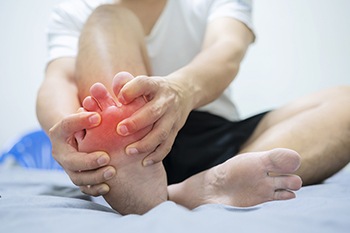Symptoms of Gout
Tuesday, 30 January 2024 00:00
Gout, once associated with excess and opulence, is making a modern resurgence, affecting nearly 4 percent of adults in the US. Gout, a painful inflammatory arthritis, can be found in both men and women, although men are three times more likely to develop it. Caused by the crystallization of uric acid within joints, gout can be both debilitating and chronic. Uric acid, a byproduct of cellular processes, accumulates when the body produces too much or doesn't excrete enough. Gout attacks occur when uric acid levels become excessively high, forming crystals that trigger inflammation and intense pain. The initial gout attack typically targets one joint, often the big toe, with subsequent attacks potentially affecting various joints simultaneously. Joints in the foot, ankle, knee, and even fingers may be affected. During an attack, the affected joint becomes red, swollen, and extremely tender. Even the slightest pressure can induce severe pain. Gout attacks tend to occur suddenly, with nighttime flares being more common. The effect on daily life during a gout attack is significant. While there is no cure for gout, medications and self-management strategies may help to alleviate symptoms and prevent future flares. For help in managing gout, it is suggested that you consult a podiatrist.
Gout is a painful condition that can be treated. If you are seeking treatment, contact Dr. Kirk Sherris from Liberty Bay Foot & Ankle. Our doctor will treat your foot and ankle needs.
What Is Gout?
Gout is a form of arthritis that is characterized by sudden, severe attacks of pain, redness, and tenderness in the joints. The condition usually affects the joint at the base of the big toe. A gout attack can occur at any random time, such as the middle of the night while you are asleep.
Symptoms
- Intense Joint Pain - Usually around the large joint of your big toe, and it most severe within the first four to twelve hours
- Lingering Discomfort - Joint discomfort may last from a few days to a few weeks
- Inflammation and Redness -Affected joints may become swollen, tender, warm and red
- Limited Range of Motion - May experience a decrease in joint mobility
Risk Factors
- Genetics - If family members have gout, you’re more likely to have it
- Medications - Diuretic medications can raise uric acid levels
- Gender/Age - Gout is more common in men until the age of 60. It is believed that estrogen protects women until that point
- Diet - Eating red meat and shellfish increases your risk
- Alcohol - Having more than two alcoholic drinks per day increases your risk
- Obesity - Obese people are at a higher risk for gout
Prior to visiting your podiatrist to receive treatment for gout, there are a few things you should do beforehand. If you have gout you should write down your symptoms--including when they started and how often you experience them, important medical information you may have, and any questions you may have. Writing down these three things will help your podiatrist in assessing your specific situation so that he or she may provide the best route of treatment for you.
If you have any questions, please feel free to contact our office located in Poulsbo, WA . We offer the newest diagnostic and treatment technologies for all your foot care needs.






